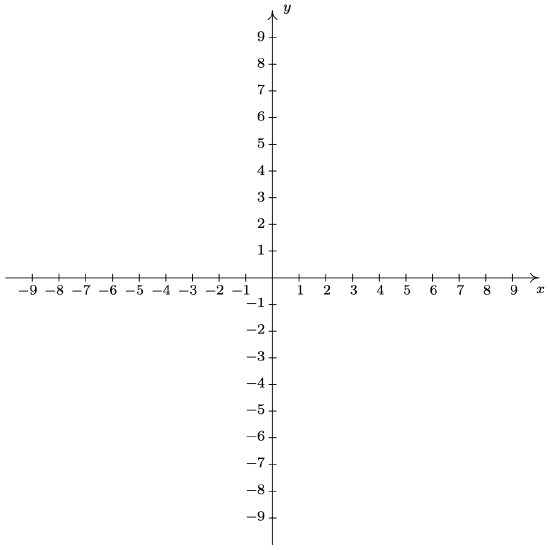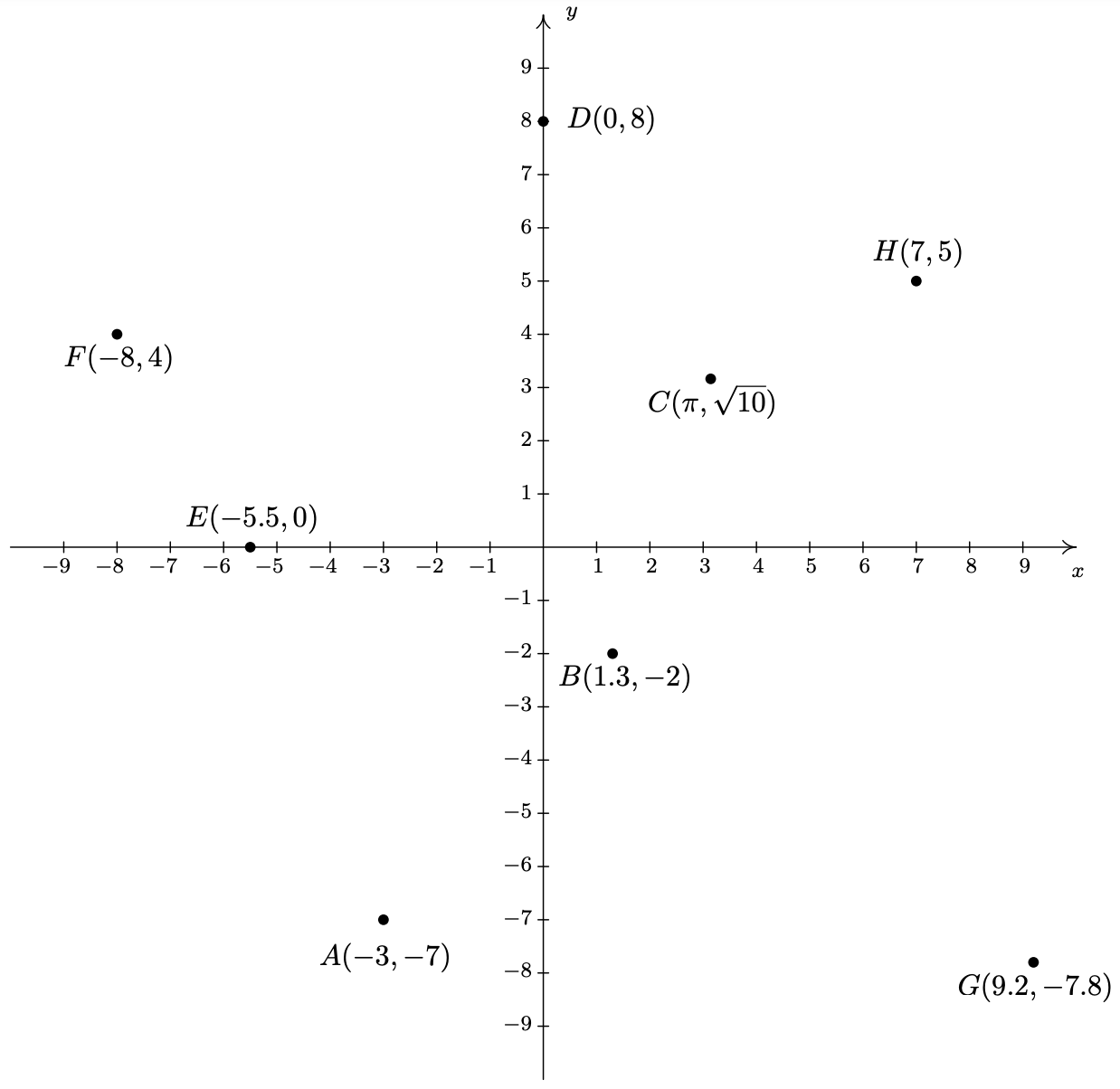1.1E: Exercises
- Page ID
- 120073
\( \newcommand{\vecs}[1]{\overset { \scriptstyle \rightharpoonup} {\mathbf{#1}} } \)
\( \newcommand{\vecd}[1]{\overset{-\!-\!\rightharpoonup}{\vphantom{a}\smash {#1}}} \)
\( \newcommand{\id}{\mathrm{id}}\) \( \newcommand{\Span}{\mathrm{span}}\)
( \newcommand{\kernel}{\mathrm{null}\,}\) \( \newcommand{\range}{\mathrm{range}\,}\)
\( \newcommand{\RealPart}{\mathrm{Re}}\) \( \newcommand{\ImaginaryPart}{\mathrm{Im}}\)
\( \newcommand{\Argument}{\mathrm{Arg}}\) \( \newcommand{\norm}[1]{\| #1 \|}\)
\( \newcommand{\inner}[2]{\langle #1, #2 \rangle}\)
\( \newcommand{\Span}{\mathrm{span}}\)
\( \newcommand{\id}{\mathrm{id}}\)
\( \newcommand{\Span}{\mathrm{span}}\)
\( \newcommand{\kernel}{\mathrm{null}\,}\)
\( \newcommand{\range}{\mathrm{range}\,}\)
\( \newcommand{\RealPart}{\mathrm{Re}}\)
\( \newcommand{\ImaginaryPart}{\mathrm{Im}}\)
\( \newcommand{\Argument}{\mathrm{Arg}}\)
\( \newcommand{\norm}[1]{\| #1 \|}\)
\( \newcommand{\inner}[2]{\langle #1, #2 \rangle}\)
\( \newcommand{\Span}{\mathrm{span}}\) \( \newcommand{\AA}{\unicode[.8,0]{x212B}}\)
\( \newcommand{\vectorA}[1]{\vec{#1}} % arrow\)
\( \newcommand{\vectorAt}[1]{\vec{\text{#1}}} % arrow\)
\( \newcommand{\vectorB}[1]{\overset { \scriptstyle \rightharpoonup} {\mathbf{#1}} } \)
\( \newcommand{\vectorC}[1]{\textbf{#1}} \)
\( \newcommand{\vectorD}[1]{\overrightarrow{#1}} \)
\( \newcommand{\vectorDt}[1]{\overrightarrow{\text{#1}}} \)
\( \newcommand{\vectE}[1]{\overset{-\!-\!\rightharpoonup}{\vphantom{a}\smash{\mathbf {#1}}}} \)
\( \newcommand{\vecs}[1]{\overset { \scriptstyle \rightharpoonup} {\mathbf{#1}} } \)
\( \newcommand{\vecd}[1]{\overset{-\!-\!\rightharpoonup}{\vphantom{a}\smash {#1}}} \)
Exercises
- Fill in the chart below:
Set of Real Numbers Interval Notation Region on the Real Number Line \(\ \{x \mid-1 \leq x<5\}\) \(\ [0, 3)\) 
\(\ \{x \mid-5<x \leq 0\}\) \(\ (−3, 3)\) 
\(\ \{x \mid x \leq 3\}\) \(\ (-\infty, 9)\) 
\(\ \{x \mid x \geq-3\}\)
In Exercises 2 -7, find the indicated intersection or union and simplify if possible. Express your answers in interval notation.
- \((-1,5] \cap [0,8)\)
- \((-1,1) \cup [0,6]\)
- \((-\infty,4]\cap (0,\infty)\)
- \((-\infty,0) \cap [1,5]\)
- \((-\infty, 0) \cup [1,5]\)
- \((-\infty, 5] \cap [5,8)\)
In Exercises 8 - 9, write the set using interval notation.
- \(\{x\,|\, x \neq 5 \}\)
- \(\{x\,|\, x \neq -1 \}\)
- \(\{x\,|\, x \neq -3,\, 4 \}\)
- \(\{x\,|\, x \neq 0, \, 2 \}\)
- \(\{x\,|\, x \neq 2, \, -2 \}\)
- \(\{x\,|\, x \neq 0,\, \pm 4 \}\)
- \(\{x\,|\, x \leq -1 \, \text{or} \, x \geq 1 \}\)
- \(\{x\,|\, x < 3 \, \text{or} \, x \geq 2 \}\)
- \(\{x\,|\, x \leq -3 \, \text{or} \, x > 0 \}\)
- \(\{x\,|\, x \leq 5 \, \text{or} \, x = 6 \}\)
- \(\{x\,|\, x > 2 \, \text{or} \, x = \pm 1 \}\)
- \(\{x\,|\, -3 < x < 3 \, \text{or} \, x = 4 \}\)
- Plot and label the points \(\;A(-3, -7)\), \(\;B(1.3, -2)\), \(\;C(\pi, \sqrt{10})\), \(\;D(0, 8)\), \(\;E(-5.5, 0)\), \(\;F(-8, 4)\), \(\;G(9.2, -7.8)\) and \(H(7, 5)\) in the Cartesian Coordinate Plane given below.

- For each point given in Exercise 20 above
- Identify the quadrant or axis in/on which the point lies.
- Find the point symmetric to the given point about the \(x\)-axis.
- Find the point symmetric to the given point about the \(y\)-axis.
- Find the point symmetric to the given point about the origin.
In Exercises 22 - 29, find the distance \(d\) between the points and the midpoint \(M\) of the line segment which connects them.
- \((1,2)\), \((-3,5)\)
- \((3, -10)\), \((-1, 2)\)
- \(\left( \dfrac{1}{2}, 4\right)\), \(\left(\dfrac{3}{2}, -1\right)\)
- \(\left(- \dfrac{2}{3}, \dfrac{3}{2} \right)\), \(\left(\dfrac{7}{3}, 2\right)\)
- \(\left( \dfrac{24}{5}, \dfrac{6}{5} \right)\), \(\left( -\dfrac{11}{5}, -\dfrac{19}{5} \right)\).
- \(\left(\sqrt{2}, \sqrt{3}\right)\), \(\left(-\sqrt{8}, -\sqrt{12}\right)\)
- \(\left(2 \sqrt{45}, \sqrt{12} \right)\), \(\left(\sqrt{20}, \sqrt{27} \right)\).
- \((0, 0)\), \((x, y)\)
- Find all of the points of the form \((x, -1)\) which are \(4\) units from the point \((3,2)\).
- Find all of the points on the \(y\)-axis which are \(5\) units from the point \((-5,3)\).
- Find all of the points on the \(x\)-axis which are \(2\) units from the point \((-1,1)\).
- Find all of the points of the form \((x,-x)\) which are \(1\) unit from the origin.
- Let’s assume for a moment that we are standing at the origin and the positive \(y\)-axis points due North while the positive \(x\)-axis points due East. Our Sasquatch-o-meter tells us that Sasquatch is 3 miles West and 4 miles South of our current position. What are the coordinates of his position? How far away is he from us? If he runs 7 miles due East what would his new position be?
- Verify the Distance Formula for the cases when:
- The points are arranged vertically. (Hint: Use \(P(a, y_0)\) and \(Q(a, y_{1})\).)
- The points are arranged horizontally. (Hint: Use \(P(x_0, b)\) and \(Q(x_{1}, b)\).)
- The points are actually the same point. (You shouldn’t need a hint for this one.)
- Verify the Midpoint Formula by showing the distance between \(P(x_{1}, y_{1})\) and \(M\) and the distance between \(M\) and \(Q(x_{2}, y_{2})\) are both half of the distance between \(P\) and \(Q\).
- Show that the points \(A\), \(\;B\) and \(C\) below are the vertices of a right triangle.
- \(A(-3,2)\), \(\;B(-6,4)\), and \(C(1,8)\)
- \(A(-3, 1)\), \(\;B(4, 0)\) and \(C(0, -3)\)
- Find a point \(D(x, y)\) such that the points \(A(-3, 1)\), \(\;B(4, 0)\), \(\;C(0, -3)\) and \(D\) are the corners of a square. Justify your answer.
- Discuss with your classmates how many numbers are in the interval \((0,1)\).
- The world is not flat. Thus the Cartesian Plane cannot possibly be the end of the story. Discuss with your classmates how you would extend Cartesian Coordinates to represent the three dimensional world. What would the Distance and Midpoint formulas look like, assuming those concepts make sense at all?
Answers
-
Set of Real Numbers Interval Notation Region on the Real Number Line \(\ \{x \mid-1 \leq x<5\}\) \(\ [−1, 5)\) 
\(\ \{x \mid 0 \leq x<3\}\) \(\ [0, 3)\) 
\(\ \{x \mid 2<x \leq 7\}\) \(\ (2, 7]\) 
\(\ \{x \mid-5<x \leq 0\}\) \(\ (−5, 0]\) 
\(\ \{x \mid-3<x<3\}\) \(\ (−3, 3)\) 
\(\ \{x \mid 5 \leq x \leq 7\}\) \(\ [5, 7]\) 
\(\ \{x \mid x \leq 3\}\) \(\ (-\infty, 3]\) 
\(\ \{x \mid x<9\}\) \(\ (-\infty, 9)\) 
\(\ \{x \mid x>4\}\) \(\ (4, \infty)\) 
\(\ \{x \mid x \geq-3\}\) \(\ [-3, \infty)\) 
- \((-1,5] \cap [0,8) = [0,5]\)
- \((-1,1) \cup [0,6] = (-1,6]\)
- \((-\infty,4]\cap (0,\infty) = (0,4]\)
- \((-\infty,0) \cap [1,5] = \emptyset\)
- \((-\infty, 0) \cup [1,5] = (-\infty,0) \cup [1,5]\)
- \((-\infty, 5] \cap [5,8) = \left\{ 5\right\}\)
- \((-\infty, 5) \cup (5, \infty)\)
- \((-\infty, -1) \cup (-1, \infty)\)
- \((-\infty, -3) \cup (-3, 4)\cup (4, \infty)\)
- \((-\infty, 0) \cup (0, 2)\cup (2, \infty)\)
- \((-\infty, -2) \cup (-2, 2)\cup (2, \infty)\)
- \((-\infty, -4) \cup (-4, 0) \cup (0, 4) \cup (4, \infty)\)
- \((-\infty, -1] \cup [1, \infty)\)
- \((-\infty, \infty)\)
- \((-\infty, -3] \cup (0, \infty)\)
- \((-\infty, 5] \cup \{6\}\)
- \(\{-1\} \cup \{1\} \cup (2, \infty)\)
- \((-3,3) \cup \{4\}\)
- The required points \(\;A(-3, -7)\), \(\;B(1.3, -2)\), \(\;C(\pi, \sqrt{10})\), \(\;D(0, 8)\), \(\;E(-5.5, 0)\), \(\;F(-8, 4)\), \(\;G(9.2, -7.8)\), and \(H(7, 5)\) are plotted in the Cartesian Coordinate Plane below.

-
- The point \(A(-3, -7)\) is
- in Quadrant III
- symmetric about \(x\)-axis with \((-3, 7)\)
- symmetric about \(y\)-axis with \((3, -7)\)
- symmetric about origin with \((3, 7)\)
- The point \(B(1.3, -2)\) is
- in Quadrant IV
- symmetric about \(x\)-axis with \((1.3, 2)\)
- symmetric about \(y\)-axis with \((-1.3, -2)\)
- symmetric about origin with \((-1.3, 2)\)
- The point \(C(\pi, \sqrt{10})\) is
- in Quadrant I
- symmetric about \(x\)-axis with \((\pi, -\sqrt{10})\)
- symmetric about \(y\)-axis with \((-\pi, \sqrt{10})\)
- symmetric about origin with \((-\pi, -\sqrt{10})\)
- The point \(D(0, 8)\) is
- on the positive \(y\)-axis
- symmetric about \(x\)-axis with \((0, -8)\)
- symmetric about \(y\)-axis with \((0, 8)\)
- symmetric about origin with \((0, -8)\)
- The point \(E(-5.5, 0)\) is
- on the negative \(x\)-axis
- symmetric about \(x\)-axis with \((-5.5, 0)\)
- symmetric about \(y\)-axis with \((5.5, 0)\)
- symmetric about origin with \((5.5, 0)\)
- The point \(F(-8, 4)\) is
- in Quadrant II
- symmetric about \(x\)-axis with \((-8, -4)\)
- symmetric about \(y\)-axis with \((8, 4)\)
- symmetric about origin with \((8, -4)\)
- The point \(G(9.2, -7.8)\) is
- in Quadrant IV
- symmetric about \(x\)-axis with \((9.2, 7.8)\)
- symmetric about \(y\)-axis with \((-9.2, -7.8)\)
- symmetric about origin with \((-9.2, 7.8)\)
- The point \(H(7, 5)\) is
- in Quadrant I
- symmetric about \(x\)-axis with \((7, -5)\)
- symmetric about \(y\)-axis with \((-7, 5)\)
- symmetric about origin with \((-7, -5)\)
- The point \(A(-3, -7)\) is
- \(d = 5\), \(M = \left(-1, \frac{7}{2} \right)\)
- \(d = 4 \sqrt{10}\), \(M = \left(1, -4 \right)\)
- \(d = \sqrt{26}\), \(M = \left(1, \frac{3}{2} \right)\)
- \(d= \frac{\sqrt{37}}{2}\), \(M = \left(\frac{5}{6}, \frac{7}{4} \right)\)
- \(d = \sqrt{74}\), \(M = \left(\frac{13}{10}, -\frac{13}{10} \right)\)
- \(d= 3\sqrt{5}\), \(M = \left(-\frac{\sqrt{2}}{2}, -\frac{\sqrt{3}}{2} \right)\)
- \(d = \sqrt{83}\), \(M = \left(4 \sqrt{5}, \frac{5 \sqrt{3}}{2} \right)\)
- \(d = \sqrt{x^2 + y^2}\), \(M = \left( \frac{x}{2}, \frac{y}{2}\right)\)
- \((3 + \sqrt{7}, -1)\), \((3-\sqrt{7}, -1)\)
- \((0,3)\)
- \((-1+\sqrt{3},0)\), \((-1-\sqrt{3},0)\)
- \(\left(\frac{\sqrt{2}}{2},-\frac{\sqrt{2}}{2} \right)\), \(\left(-\frac{\sqrt{2}}{2},\frac{\sqrt{2}}{2}\right)\)
- \((-3, -4)\), \(5\) miles, \((4, -4)\)
-
- The distance from \(A\) to \(B\) is \(|AB| = \sqrt{13}\), the distance from \(A\) to \(C\) is \(|AC| = \sqrt{52}\), and the distance from \(B\) to \(C\) is \(|BC| = \sqrt{65}\). Since \(\left(\sqrt{13}\right)^2 + \left( \sqrt{52} \right)^2 = \left( \sqrt{65} \right)^2\), we are guaranteed by the that the triangle is a right triangle.
- Show that \(|AC|^{2} + |BC|^{2} = |AB|^{2}\)

